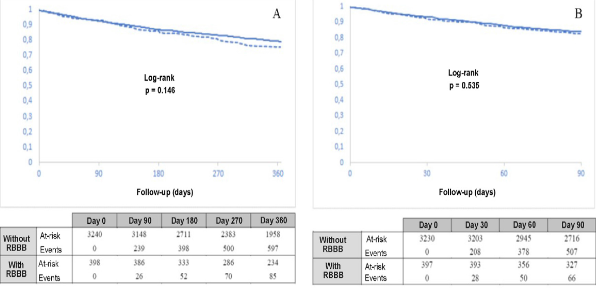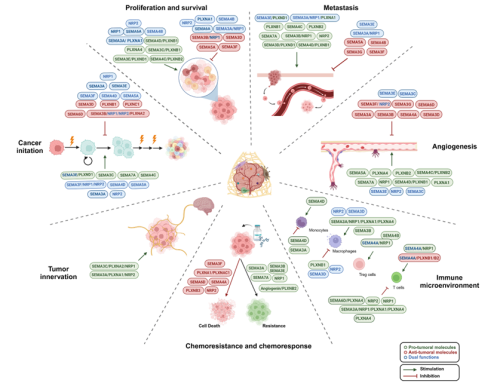Objectives
This work aims to determine the prevalence, characteristics, and impact on prognosis of right bundle branch block (RBBB) in a cohort of acute heart failure (AHF) patients.
Methods
We prospectively analyzed 3,638 AHF patients included in the RICA registry (National Heart Failure Registry of the Spanish Internal Medicine Society). We independently analyzed the relationship between baseline and clinical characteristics and the presence of RBBB as well as the potential impact of RBBB on 1-year all-cause mortality and a composite endpoint of 90-day post-discharge hospitalization or death.
Results
The prevalence of RBBB was 10.9%. Patients with RBBB were older, a higher proportion were male, had more pulmonary comorbidities, had higher left ventricular ejection fraction values, and had worse functional status. There were no differences in risk for patients with RBBB, with an adjusted hazard ratio (95% confidence interval) for 1-year mortality of 1.05 (0.83–1.32), and for the composite endpoint of 90-day post-discharge hospitalization or death of 0.97 (0.74–1.25). These results were consistent on the sensitivity analyses.
Conclusions
Few patients with AHF present with RBBB, which is consistently associated with advanced age, male sex, pulmonary comorbidities, preserved left ventricular ejection fraction, and worse functional status. Nonetheless, after considering these factors, RBBB in AHF patients is not associated with worse outcomes.
Authors:
Oriol Aguiló, J.C. Trullàs, Ó. Mirò, J. Díez-Manglano, M. Carrera-Izquierdo, M.A. Quesada-Simón, P. Álvarez-Rocha, P. Llorens, Á. González-Franco, M. Montero-Pérez-Barquero
Link:













[…] · “Prevalence and impact on prognosis of right-bundle branch block in patients with acute heart failure: Findings from the RICA registry” PMID: 35272980 DOI: 10.1016/j.rceng.2021.10.002 […]